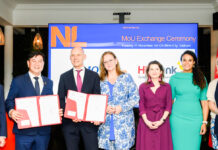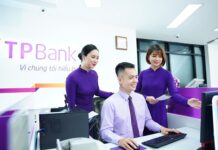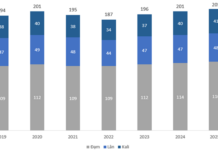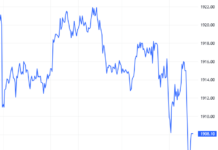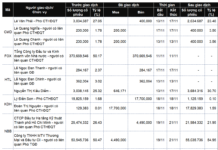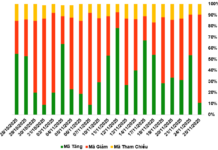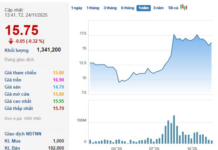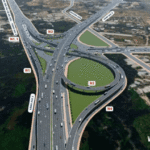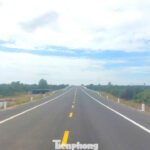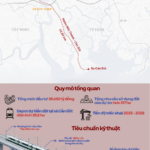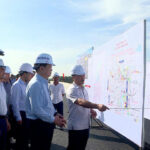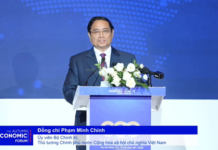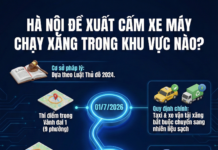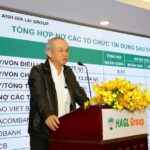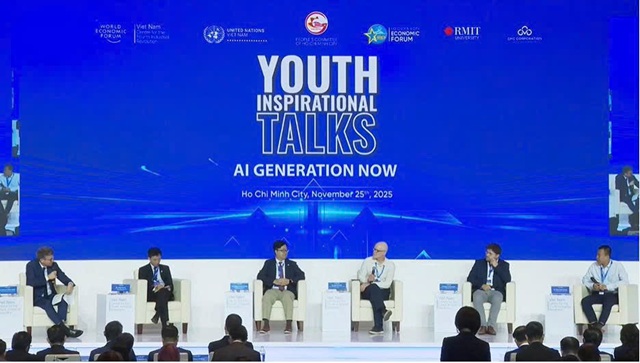
Talkshow “Intelligent Generation NOW – The Contemporary Smart Generation” on the morning of November 25, 2025.
|
As the world enters the digital era, green transformation, and the Fourth Industrial Revolution, automation, digitization, and AI are both creating pressure for job changes and opening up new opportunities in renewable energy, circular economy, and environmental technology. It is projected that by 2030, the world will face a shortage of approximately 85 million highly skilled workers. In Vietnam and Ho Chi Minh City, the demand for high-quality human resource development is increasingly urgent as the city aims to become a hub for innovation and knowledge-based economy, as outlined in Resolution 57-NQ/TW and the Resolution of the 11th Congress for the 2025-2030 term of the City Party Committee. However, the skills gap and the shortage of STEM workforce remain significant challenges.
Recognizing this importance, the organizers of the 2025 Autumn Economic Forum selected the theme “Intelligent Generation NOW – The Contemporary Smart Generation” for the opening talkshow on the morning of November 25. This event aims to create a platform connecting government leaders, international experts, and young people to discuss the mindset, skills, and responsibilities of the younger generation in the era of AI and global knowledge. This is not only a kick-off activity for the Forum but also a call for young people to join hands in building a smart, green, and sustainable future.
Transforming Ho Chi Minh City into a Regional Innovation Hub
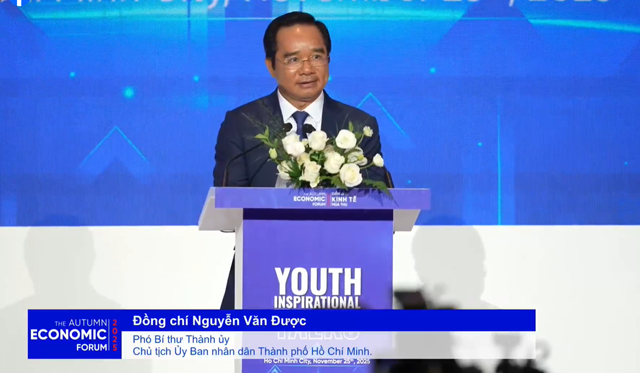
Mr. Nguyen Van Duoc – Chairman of Ho Chi Minh City People’s Committee shared, “We are living in an era where technology, artificial intelligence, and data are reshaping every aspect of life. Opportunities have never been as vast as they are today, but they also come with unprecedented challenges. In this context, Ho Chi Minh City is making strong efforts to become a hub for innovation, technology, finance, and knowledge for the country and the region. Resolution 98 has opened up new space for the city to experiment with breakthrough models that have no precedent. Strategic initiatives such as the Ho Chi Minh City International Financial Center are being accelerated to position the city as a convergence point for financial technology and innovation.”
Ho Chi Minh City always considers education and training as a strategic foundation, with a leading university system, numerous support policies, and effective “3-party” collaboration models involving the Government, Schools, and Businesses to bring knowledge into practice, driving development. These new policies not only challenge the city’s transformation but, more importantly, open up numerous opportunities for the younger generation.
To become a regional innovation hub, Ho Chi Minh City has adopted the strategy of “Global Cooperation, Local Action.” From vision to action, the city is implementing specific programs such as promoting digital transformation in urban management, from transportation and healthcare to education, committing to green growth, developing a circular economy, and creative cities, placing people, especially young people, at the center of all development strategies.
According to Mr. Duoc, “Young people are the generation born in the digital age, with an open mindset, superior access to technology, and the spirit to dare to think, dare to act, and dare to fail to grow stronger. You are not just the future workforce but the driving force of today. You are not just participating in a transformation but are at the center of that transformation.”
Ho Chi Minh City is committed to creating the best conditions to maximize the potential of young people through three major orientations. First is a strong investment in digital infrastructure, including the development of 5G, open data, and digital platforms to support innovation. Second is the development of high-quality human resources through collaboration with universities and research centers to train experts in technology, AI, and data science. Third is the completion of an innovation ecosystem, encouraging breakthrough startups, developing creative spaces, and sandbox environments for new models. The goal is to make Ho Chi Minh City a regional innovation hub where every young person has the opportunity to learn, experiment, and shine.
Mindset Shift Roadmap for the Younger Generation
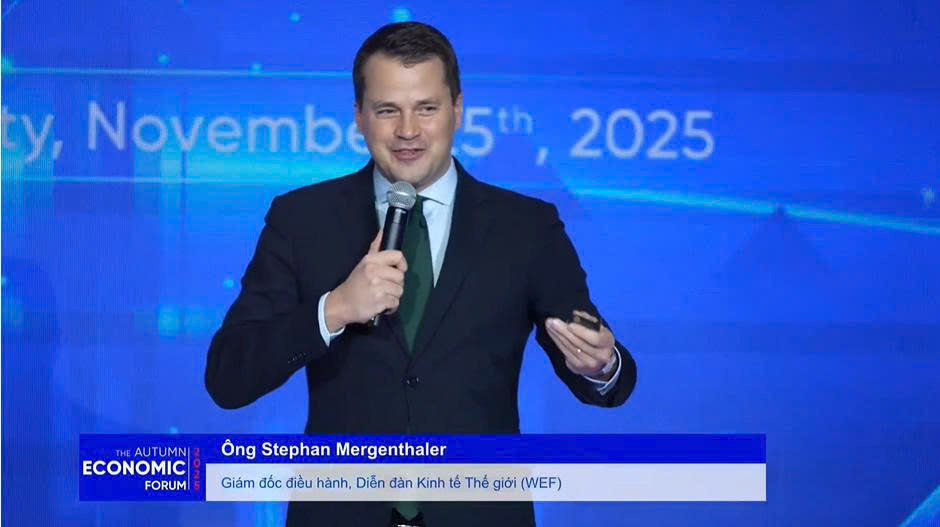
Mr. Stephan Mergenthaler – Managing Director, World Economic Forum (WEF) shared that, according to WEF research, when surveying leading global companies about the impact of technology, 39% of core worker skills will change. This means that future jobs will require skills that you may not even have heard of today.
Technology does not replace humans but is redefining what humans can do. Looking at the list of top skills businesses are seeking in 2025, they include analytical thinking, resilience, flexibility, leadership, and creativity. However, looking further ahead to 2030, the focus will shift significantly toward the ability to collaborate with AI and big data, cybersecurity, and especially lifelong learning. A notable fact is that when asking companies what is hindering their transformation, 63% of responses point to the “skills gap” as the biggest barrier.
The cause of this change comes from the exponential development of technology. We are witnessing the explosive growth of computing power for training large language models (LLMs). Not just AI, we also see breakthroughs in quantum computing, the cost reduction of energy storage technology, advances in biotechnology (such as human genome decoding), and the expansion of the space economy. All these changes are opening up entirely new potentials.
When looking at the future of work, the key is to envision collaboration between humans and machines. There has been much debate about AI and automation destroying jobs. According to our global assessment, while about 92 million jobs will be replaced, many more jobs will be created thanks to these new technological opportunities.
By 2030, the labor landscape will be very balanced: part of the work will be done by machines, part by humans, and the most important part will be the collaboration between the two. Businesses today are not just focusing on technology; 77% of them are focusing on upskilling existing employees, and 69% are seeking new talent with skills not only to design AI tools but also to collaborate effectively with them. We will soon see the emergence of a hybrid workforce—where humans manage teams of autonomous agents.
Mr. Stephan Mergenthaler proposed a 4-point mindset shift roadmap:
First, shift from a competitive mindset to a collaborative one. Don’t view AI as an opponent in a zero-sum game. See it as an opportunity to build hybrid teams, combining the best of artificial intelligence with the unique skills and qualities of humans.
Second, shift from static learning to continuous learning. In the past, education was seen as acquiring a fixed set of skills for a lifetime. Today, you must view learning as an ongoing journey, continuously retraining and upgrading yourself.
Third, shift from a local mindset to a systems mindset. Instead of focusing on isolated fields, the new world of work requires the ability to connect disparate points. The question is not what you know about a narrow field, but whether you can be curious and creative to solve complex problems.
Finally, shift from specialization to integration. Become a bridge. Don’t let yourself be confined to a fixed professional box. The ability to integrate knowledge from various sources will be your greatest competitive advantage.
In summary, the most important shift is from focusing on efficiency to focusing on creativity. Technology can solve efficiency problems, but creativity is the domain of humans.
– 20:02 25/11/2025
Prime Locations in Ho Chi Minh City Hosting Hundreds of Residential Towers
Nestled along Nguyễn Hữu Thọ Street and Highway 1K, a burgeoning skyline of high-rise condominiums stands in stark contrast to the crumbling infrastructure below. Overburdened by the sheer density of these residential towers, the area grapples with chronic traffic congestion, deteriorating roads, and persistent flooding, underscoring the urgent need for sustainable urban planning.
The Scale of the Ben Thanh – Can Gio Metro Project
The 53-kilometer metro line, with an investment of over 85 trillion VND, stretches from Ben Thanh through Districts 1, 4, 7, and the former Nha Be District, crossing the Soai Rap River to reach Can Gio.






